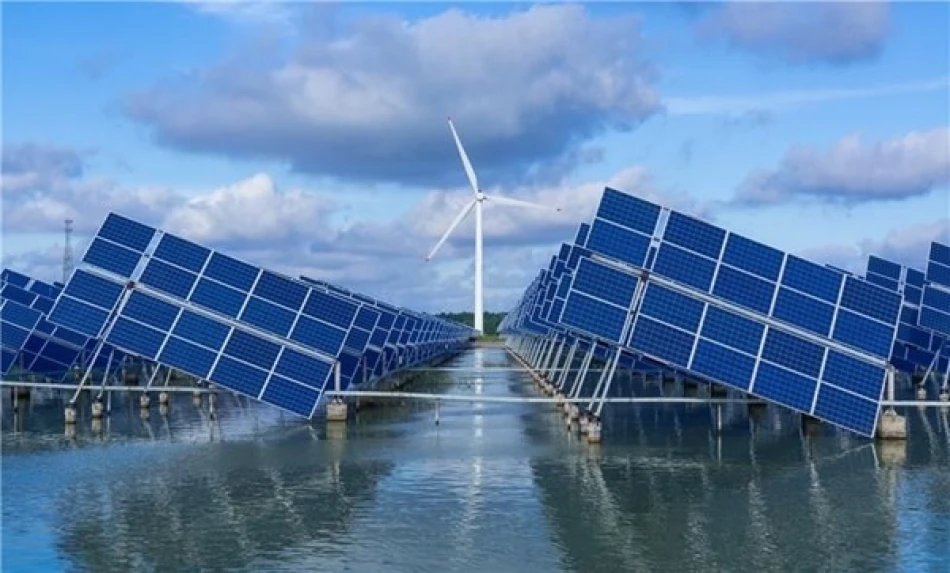
Renewable Energy Outshines Fossil Fuels: New IRENA Report Shows 91% of Projects Cost-Effective
Renewable Energy Dominance: Clean Power Now Crushes Fossil Fuels on Cost
The renewable energy revolution has reached a decisive tipping point, with clean power sources now dramatically undercutting fossil fuels on cost while delivering unprecedented savings to the global economy. According to the International Renewable Energy Agency's latest cost analysis, 91% of renewable projects commissioned in 2024 were cheaper than any new fossil fuel alternative, marking a fundamental shift in energy economics that could accelerate the world's transition away from carbon-intensive power generation.
The Numbers Tell the Story: Renewables Achieve Cost Supremacy
The scale of renewable energy's cost advantage has become overwhelming. Solar photovoltaic power averaged 41% cheaper than the most affordable fossil fuel alternatives in 2024, while onshore wind projects delivered an even more striking 53% cost advantage. Onshore wind has emerged as the cheapest electricity source globally at $0.034 per kilowatt-hour, followed closely by solar PV at $0.043 per kilowatt-hour.
These figures represent more than incremental improvements—they signal a complete restructuring of energy economics. The addition of 258 gigawatts of renewable capacity in 2024 alone enabled the global economy to avoid $57 billion in fossil fuel costs, while existing renewable infrastructure prevented an estimated $467 billion in fossil fuel expenditures throughout the year.
Regional Winners and Losers Emerge in the Clean Energy Race
Asia, Africa, and Latin America Poised for Acceleration
The renewable cost revolution is creating distinct regional advantages. Asia, Africa, and South America are positioned to capture the greatest benefits from plummeting clean energy costs, thanks to abundant renewable resources and accelerating technological learning curves. These regions can leapfrog expensive fossil fuel infrastructure, potentially achieving energy independence while building competitive industrial advantages.
Europe and North America Face Structural Headwinds
Conversely, Europe and North America risk falling behind despite their technological sophistication. Structural obstacles including sluggish permitting processes, inadequate grid capacity, and elevated system integration costs threaten to keep renewable energy expenses artificially high. This regulatory and infrastructure lag could undermine their competitiveness in energy-intensive industries.
The Investment Paradigm Shifts Toward Clean Energy
Financial markets are recognizing renewable energy's transformation from environmental necessity to economic imperative. The technology has benefited from years of innovation, supportive policies, and market expansion that have created self-reinforcing cost reductions. Battery energy storage systems exemplify this trend, with costs plummeting 93% since 2010 to reach $192 per kilowatt-hour for utility-scale systems in 2024.
However, financing costs remain a critical differentiator, particularly in developing nations where elevated capital costs due to economic instability and investment risks can significantly increase the levelized cost of renewable electricity. This financing gap represents both a challenge and an opportunity for international development finance institutions.
Grid Integration: The Next Frontier for Renewable Dominance
As renewable costs continue falling, grid connection and integration challenges have emerged as the primary bottleneck constraining deployment. Wind and solar projects increasingly face delays due to grid connection obstacles, permitting backlogs, and supply chain constraints. This infrastructure deficit is particularly acute in G20 countries and emerging markets, where grid investment must accelerate to match rapid electricity demand growth and renewable capacity expansion.
The solution lies partly in technological innovation beyond power generation itself. Hybrid systems combining solar, wind, and battery storage, enhanced by artificial intelligence-powered digital tools, are improving grid integration capabilities and asset performance. These integrated approaches could resolve intermittency concerns while maximizing renewable energy's economic advantages.
Market Implications: A New Energy Order Takes Shape
The renewable cost advantage creates profound implications for energy markets, industrial competitiveness, and geopolitical relationships. Countries and regions that successfully deploy low-cost renewable energy will gain manufacturing and industrial advantages, while those constrained by regulatory barriers or financing challenges risk economic disadvantage.
For investors, the data suggests renewable energy has moved beyond the early adoption phase into mainstream economic superiority. The challenge now lies not in proving renewable viability, but in capturing the opportunities created by the technology's cost leadership while managing the risks associated with grid integration and policy uncertainty.
As UN Secretary-General António Guterres noted, clean energy represents smart investment as the world pursues economically viable opportunities. The fossil fuel era is retreating not through regulatory mandate alone, but through economic obsolescence—a shift that could prove far more durable and transformative than policy-driven transitions.
 Layla Al Mansoori
Layla Al Mansoori







